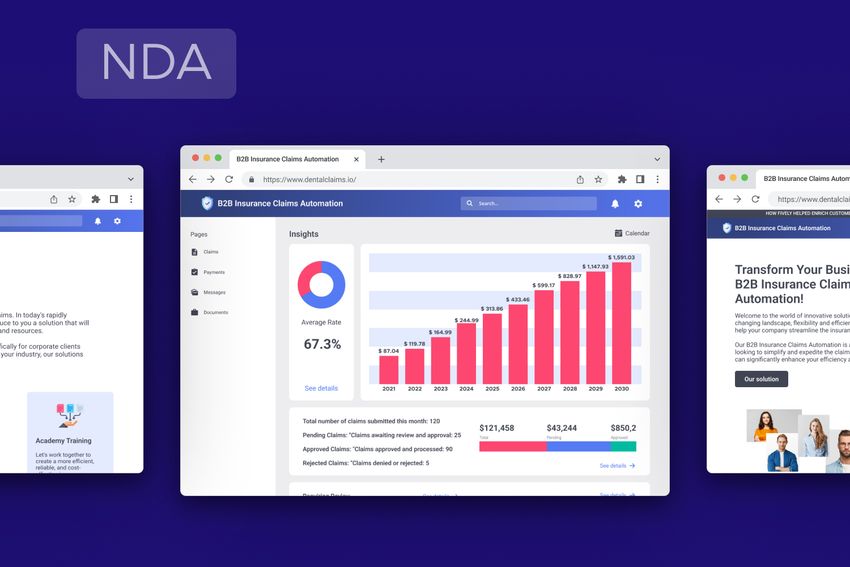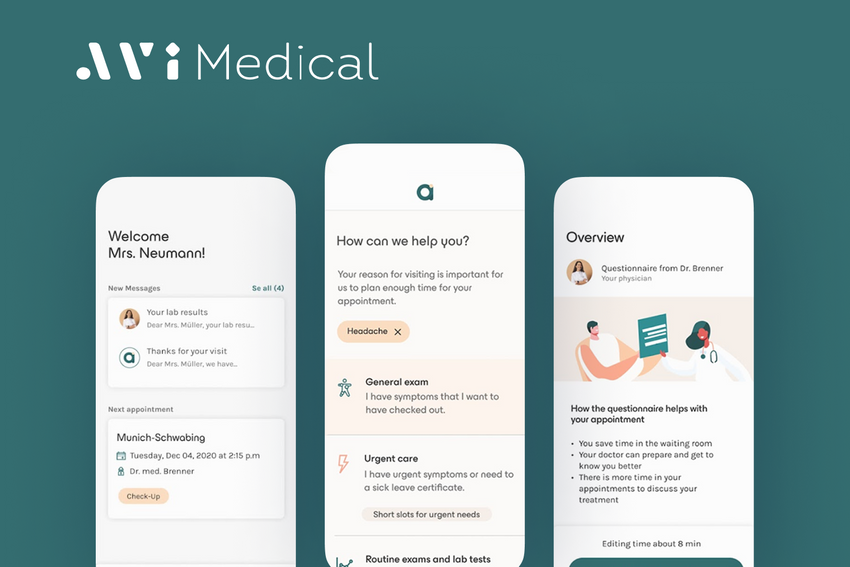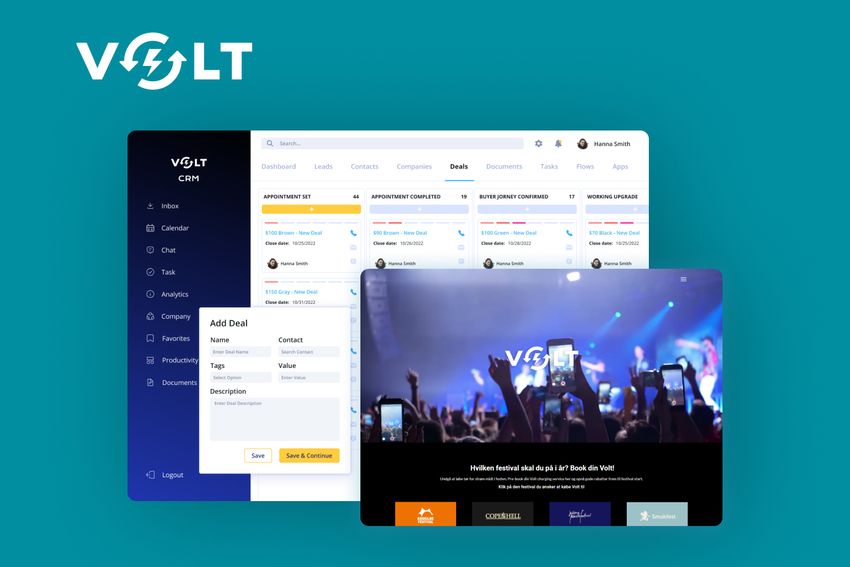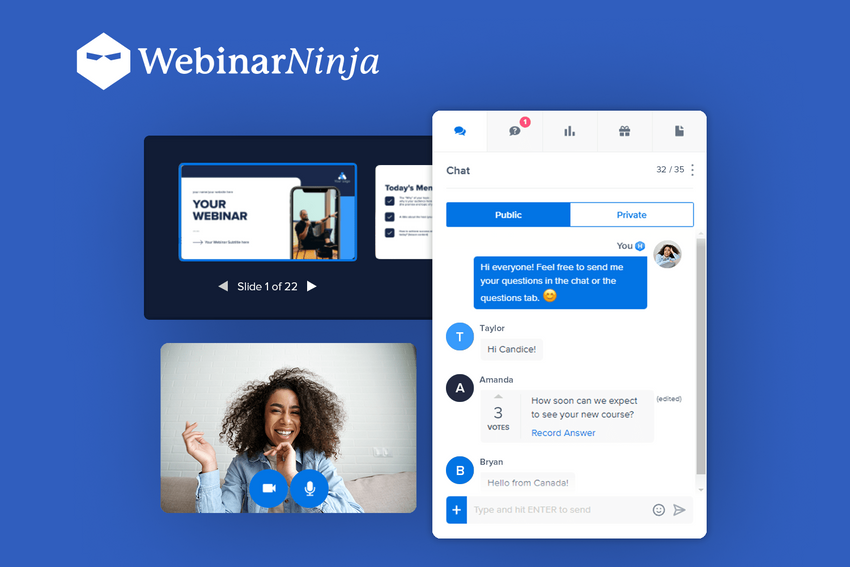Modern AI Tech Stack: Build Smarter, Scale Faster, Think Bigger
Explore the essential components, types, examples, and trends of modern AI tech stacks, empowering businesses to build scalable, intelligent solutions with confidence and clarity.
In 2025, AI is the foundation of business: from real-time recommendations to predictive analytics, autonomous agents, and generative intelligence, AI-driven products demand a tech stack built to move at machine speed.
But here’s the truth: traditional tools can’t keep up. You need a modern AI tech stack that combines raw power, flexible architecture, and seamless scalability — one that speaks in tokens, trains at scale, and deploys in milliseconds.
In this article, we’ll break down the essential components of a cutting-edge AI stack, from data ingestion and model training to orchestration, serving, and post-deployment monitoring. Whether you’re building the next ChatGPT or turbocharging your internal analytics, this is the blueprint for doing AI right.
Let’s dive in!
What Is an AI Tech Stack?
An AI tech stack is the complete ecosystem of tools, frameworks, platforms, and infrastructure that powers the development, deployment, and scaling of AI applications.
It’s not just one tool or language — it’s a multi-layered architecture that spans everything from data ingestion and preprocessing to model training, versioning, deployment, and monitoring. Each layer is optimized to handle the complexity and performance demands of machine learning and deep learning workflows.
Thus, the right AI stack enables you to:
- Build smarter, faster models
- Scale seamlessly from prototype to production
- Ensure reliability, security, and transparency
- Shorten time-to-insight and time-to-market
- Future-proof your AI product
Whether you're training a massive transformer or deploying lightweight on-device models, your tech stack is the engine behind every decision your AI makes.
Core Layers of the Modern AI Tech Stack
To build reliable, scalable, and future-ready AI systems, you need more than just a good model — you need the full stack. Below are the five foundational layers that power every modern AI product, from research prototypes to enterprise-grade production systems.
1. Data Layer: The Fuel Behind the Intelligence
Every AI system starts with one thing: data. Lots of it.
The Data Layer is responsible for collecting, ingesting, storing, transforming, and cleaning raw input from diverse sources—be it logs, sensors, user behavior, APIs, or third-party feeds.
A robust data layer ensures your models are trained on accurate, up-to-date, and well-structured data — no more garbage in, garbage out.
Popular Tools:
- Apache Kafka – For real-time streaming and event-driven pipelines
- Snowflake / BigQuery – Scalable cloud data warehousing
- Delta Lake / Apache Hudi – Transactional, versioned data lakes for ML workflows
- Airbyte / Fivetran – Modern ELT data connectors
2. Modeling Layer: The Brain of the Stack
This is where the magic happens—training, tuning, and experimenting with machine learning and deep learning models. Whether it’s a classic XGBoost model or a transformer-based LLM, the Modeling Layer houses the frameworks and tools to build, test, and iterate.
This layer defines the intelligence and accuracy of your AI solution. A solid modeling layer enables fast experimentation, reusable pipelines, and access to cutting-edge model architectures.
Popular Tools:
- TensorFlow – Google’s all-in deep learning framework
- PyTorch – Flexible, dev-friendly, and now the industry favorite
- Hugging Face Transformers – Pre-trained state-of-the-art models for NLP, vision, and more
- OpenVINO – Optimized inference for edge/IoT devices
3. Infrastructure Layer: The Backbone of Scale
Your model won’t go far without infrastructure. This layer is all about compute power, orchestration, and experiment management, ensuring your AI workloads run smoothly — from local dev to massive distributed training.
This layer gives your stack the agility, reproducibility, and power to go from dev to prod without chaos.
Popular Tools:
- Kubernetes – Container orchestration for deploying ML workloads at scale
- Ray – Distributed computing framework built for ML
- MLflow – Open-source platform for model tracking, lifecycle management, and reproducibility
- AWS SageMaker / Google Vertex AI – Fully managed AI platforms with baked-in scaling and deployment tools
4. Serving Layer: Real-Time Intelligence in Production
Training a model is just the beginning — serving it to users is where the real value kicks in. The Serving Layer enables real-time or batch inference, handles requests, and ensures your AI product responds fast and reliably.
No matter how powerful your model is, if it can’t serve users quickly and consistently, it’s useless. This layer delivers the brains to your users—securely, fast, and at scale.
Popular Tools:
- TorchServe / TensorFlow Serving – Scalable model servers for deep learning
- FastAPI – Lightweight Python framework for deploying ML models via REST APIs
- Triton Inference Server – NVIDIA’s optimized inference engine for GPU-powered models
5. Monitoring & Feedback Layer: The AI Control Center
AI systems don’t just break — they drift. Over time, data distributions change, user behavior evolves, and models lose accuracy. This layer is about watching, learning, and adapting.
This layer provides accountability, reliability, and adaptability, helping you detect issues before they impact users — and automatically trigger retraining workflows.
Popular Tools:
- Evidently AI – Open-source model monitoring and drift detection
- Arize AI – ML observability and performance tracing
- Weights & Biases – Experiment tracking, visualization, and production monitoring
Together, these five layers form the foundation of any production-grade AI system. Skip one, and you're building on shaky ground. Get them right — and you’re ready to scale intelligence with confidence.
Key Components of AI Tech Stack
A modern AI stack isn’t just about models — it’s about everything that surrounds and powers them. From data pipelines to NLP engines and distributed infrastructure, these core components work together to enable scalable, intelligent systems.
Here’s a breakdown of each component and the technologies that lead the way in 2025:
Data Storage and Organization
Efficient storage is the foundation of any AI system. Your data needs to be accessible, queryable, and scalable — regardless of its structure. Thus, this layer includes the following tools:
SQL Databases
For structured data with fixed schemas, such as MySQL, PostgreSQL, and Oracle. Ideal for transactional data, relational joins, and complex queries.
NoSQL Databases
For unstructured or semi-structured data with flexible schemas, such as MongoDB, Cassandra, and Couchbase. Best for large-scale, high-velocity data like logs, JSON, and time series.
Big Data Solutions
Technologies like Hadoop HDFS and Apache Spark manage massive data volumes across distributed systems. HDFS provides reliable, fault-tolerant storage. Spark enables fast in-memory data processing for advanced analytics and ML.
Cloud Data Warehouses
Tools like Snowflake, Google BigQuery, and Amazon Redshift support high-speed querying, scalability, and seamless BI/AI integrations.
Data Preprocessing and Feature Recognition
Raw data isn’t usable until it's cleaned, normalized, and engineered into meaningful features. This layer is where AI starts to take shape. It includes:
Apache Airflow / Prefect
Orchestrate complex data workflows and automate ETL/ELT pipelines.
Pandas / Dask
Widely used in Python for data wrangling and transformation. Dask handles larger-than-memory datasets and parallel processing.
Feature Stores
Tools like Feast manage and serve reusable features across models and environments, ensuring consistency between training and production.
Machine Learning Frameworks
These frameworks is where the core learning happens — training, evaluating, and optimizing models. It includes the following tools:
TensorFlow
Google’s flagship ML framework for deep learning, with powerful tools for deployment and optimization.
PyTorch
Developer-friendly and highly flexible, it’s become the go-to framework for research and production in 2025.
Scikit-learn
Still a powerhouse for traditional ML models (SVM, Random Forests, etc.)—great for prototyping.
XGBoost / LightGBM / CatBoost
Gradient boosting frameworks, often used in tabular and structured data competitions and commercial apps.
Natural Language Processing (NLP)
NLP powers everything from chatbots to sentiment analysis and large language models (LLMs). This layer incorporates the following tools:
Hugging Face Transformers
The gold standard for deploying pre-trained AI models like BERT, GPT, T5, and custom LLMs.
spaCy / NLTK
Lightweight libraries for tokenization, POS tagging, NER, and rule-based NLP tasks.
OpenAI / Anthropic APIs
Use foundation AI models for text generation, summarization, classification, and intelligent assistants without training your own.
Rasa
Open-source platform for building context-aware conversational agents and chatbots.
Computer Vision
This layer is essential for apps involving image, video, and spatial understanding — think autonomous vehicles, face recognition, and defect detection:
OpenCV
The go-to computer vision library for image manipulation and traditional CV tasks.
YOLO / Detectron2 / EfficientDet
Pre-trained object detection models, optimized for real-time performance.
TensorFlow Lite / ONNX Runtime / OpenVINO
Frameworks for edge-based inference, where latency and resource limits matter.
Cloud and Scalable Infrastructure
AI needs compute — lots of it. Scalable infrastructure enables teams to train, deploy, and iterate AI models quickly and cost-effectively. This is possible due to the following tools:
AWS SageMaker / Google Vertex AI / Azure ML
Managed cloud platforms that provide training environments, automated pipelines, notebooks, and hosting out of the box.
Kubernetes + Kubeflow / Ray
For scalable ML workloads, experiment orchestration, and auto-scaling clusters.
Docker + NVIDIA GPUs
Essential for reproducible, accelerated training and deployment environments.
Terraform / Pulumi
Infrastructure-as-code tools to define scalable, repeatable ML infrastructure.
Data Manipulation Utilities
Not every step needs a heavy framework. These libraries streamline the day-to-day work of developers and data scientists:
NumPy / Pandas
For data exploration, matrix operations, and numerical computing.
Dask / Vaex
Enable scalable dataframes and parallelized computation across CPUs/cores.
Polars
A blazing-fast dataframe library built in Rust—ideal for lightning-speed ETL pipelines in AI workflows.
Great Expectations
For data quality checks, schema enforcement, and validation in production pipelines.
Each component of the AI technology stack plays a distinct role, and together they create a robust, adaptable, and production-ready environment for building intelligent systems. Choose the right mix for your needs—and build smarter from day one.
Types of AI Stacks: One Size Doesn’t Fit All
Not every AI product is built the same. Depending on your use case, user base, and performance requirements, your AI stack will look dramatically different. Whether you're powering a chatbot, scaling enterprise analytics, or building a vertical-specific AI model, the tools you choose should fit the mission.
Here are the four major types of AI technology stacks and what sets them apart:
🧠 1. Generative AI Tech Stack
Used for building AI that creates — text, images, music, code, or entire conversations. This stack is focused on large language models (LLMs), diffusion models, and scalable inference.
Core Features:
- Heavy use of transformer architectures (GPT, BERT, T5, LLaMA)
- Requires GPU-optimized infrastructure for model training and inference
- Integration with prompt engineering frameworks and retrieval-augmented generation (RAG) for smarter, context-aware outputs
- Advanced tokenization and memory optimization techniques
Tech Stack Includes:
- Modeling: Hugging Face Transformers, OpenAI API, LangChain
- Infra: PyTorch + DeepSpeed, ONNX Runtime, Ray Serve, NVIDIA Triton
- Orchestration: LangSmith, Pinecone, Vector DBs (Weaviate, Qdrant), Kubernetes
- Monitoring: Weights & Biases, PromptLayer, Arize for LLMOps
Use Cases: Chatbots, content generators, coding assistants, creative tools.
🏢 2. Enterprise AI Tech Stack
Focused on data-driven decision-making, process automation, and predictive analytics at scale within business operations.
Core Features:
- Structured data pipelines
- Focus on explainability, governance, and compliance
- Seamless integration with existing enterprise systems (ERPs, CRMs)
- Prioritizes security, data lineage, and auditability
Tech Stack Includes:
- Data: Snowflake, Azure Synapse, Informatica
- Modeling: DataRobot, H2O.ai, Azure AutoML
- MLOps: MLflow, Kubeflow, SageMaker Pipelines
- Serving: FastAPI, Flask, REST/GraphQL APIs
- Monitoring: Evidently AI, Datadog, Seldon Core
Use Cases: Customer segmentation, fraud detection, supply chain optimization, sales forecasting
👥 3. Consumer AI Tech Stack
Built for real-time interaction with millions of users—think recommendation engines, smart filters, and voice assistants.
Core Features:
- Real-time performance and low-latency inference
- Focus on personalization and user behavior modeling
- Scalable mobile and web integration
- Often tied to edge computing or hybrid deployment
Tech Stack Includes:ы
- Modeling: TensorFlow Lite, ONNX, PyTorch Mobile
- Serving: Firebase ML, AWS Lambda, TorchServe
- Data: Redis, Elasticsearch for real-time data feeds
- Infra: GCP / AWS + CDN edge nodes
- Monitoring: Prometheus, Grafana, Segment
Use Cases: Smart assistants, personalized feeds, fitness apps, photo enhancers
🧬 4. Domain-Specific AI Technology Stacks
Custom-built stacks designed for specific industries or niches, often requiring specialized models, datasets, or compliance.
Core Features:
- Tailored to domain-specific tasks (e.g., medical imaging, legal NLP, manufacturing QA)
- Prioritizes accuracy, robustness, and domain knowledge over generalization
- Usually involves private datasets, custom ontologies, or rule-based systems alongside AI
Examples by Domain
- Healthcare: MONAI, BioBERT, HIPAA-compliant infrastructure
- Legal Tech: LexNLP, custom LLMs fine-tuned on legal corpora
- Fintech: Risk scoring models, explainable AI (XAI), strict audit trails
- Industrial AI: Real-time anomaly detection using edge-AI (NVIDIA Jetson, OpenVINO)
- Use Cases: Tumor detection, contract analysis, credit scoring, defect classification
Each of these stacks is optimized for a specific reality—whether it's millisecond performance, enterprise-grade reliability, creative flexibility, or specialized intelligence. Choose wisely, and you’re not just building AI — you’re building impact.

Real-World Examples of Technology Stack for AI Model Development from Industry Leaders
Want to know what’s really powering the biggest breakthroughs in AI? Here’s a peek inside the AI stacks of some of the most innovative companies on the planet—from OpenAI and Netflix to Tesla and Spotify. These stacks aren’t hypothetical—they’re deployed at scale, optimized for results, and constantly evolving.

OpenAI – Generative AI at Scale
AI Purpose: Foundation models, including GPT-4, Codex, and DALL·E. Offers extreme parallelism, custom token optimization, and reinforcement learning from human feedback (RLHF).
Key Stack Highlights:
- Modeling: PyTorch, custom CUDA kernels, Megatron-LM
- Infrastructure: Microsoft Azure AI supercomputing clusters (hundreds of GPUs)
- Deployment: Azure OpenAI API, Kubernetes, Triton
- Monitoring: In-house usage feedback loop, PromptLayer for prompt tracking

Netflix – Predictive AI & Personalization Engine
AI Purpose: Personalized recommendations, content optimization, dynamic A/B testing. Special hybrid models combining user behavior and content-based signals across devices in real time.
Key Stack Highlights:
- Data: Apache Kafka, S3, BigQuery, Iceberg
- Modeling: TensorFlow, XGBoost, Meta-learning frameworks
- Infrastructure: Metaflow (Netflix-built ML platform), Kubernetes, AWS
- Serving: Real-time with Redis & FastAPI, edge CDN integration
- Monitoring: Atlas, custom internal ML dashboards

Tesla – Computer Vision + Edge AI for Autonomous Driving
AI Purpose: Real-time environment analysis, route planning, and autonomous control. Closed-loop learning from the real world via massive fleet data and on-car retraining.
Key Stack Highlights:
- Data: Petabyte-scale in-house fleet telemetry, custom labeled datasets
- Modeling: PyTorch-based CV stack, HydraNet, occupancy networks
- Infrastructure: Dojo supercomputer, custom inference hardware, PyTorch Lightning
- Serving: On-device inference via Tesla’s custom inference chip
- Monitoring: Shadow mode comparisons, active learning pipelines

Spotify – Real-Time Audio + NLP Personalization
AI Purpose: Music recommendations, podcast categorization, real-time playlists. Dynamic playlist generation using NLP + collaborative filtering across billions of tracks.
Key Stack Highlights:
- Data: Apache Beam, Bigtable, Scio (Scala + Beam)
- Modeling: TensorFlow, PyTorch, Hugging Face for NLP
- Infrastructure: GCP-based, Luigi pipelines, Kubernetes
- Serving: Near real-time inference on user audio behavior
- Monitoring: Custom dashboarding, AI fairness evaluation
IBM Watson – Domain-Specific Enterprise AI
AI Purpose: NLP for healthcare, finance, and legal sectors. Focus on regulated industries, multilingual and compliance-aware AI design.
Key Stack Highlights:
- Data: Structured enterprise data, internal document corpora
- Modeling: Watson NLP, AutoAI, Hybrid ML + rule-based systems
- Infrastructure: OpenShift, Red Hat AI stack, private cloud setups
- Serving: REST APIs + Watson Assistant for chat integration
- Monitoring: Audit trails, compliance-ready logging, explainable AI tooling
These stacks prove one thing: AI excellence isn’t just about having one great model—it’s about crafting the entire ecosystem to support, scale, and sustain intelligence.

Criteria for Selecting the Right Technology Stack for AI Development
Choosing your AI technology stack isn’t about what’s trendy — it’s about what will make your product scalable, sustainable, and successful. The wrong stack slows you down, costs more, and becomes a nightmare to maintain. The right one? It makes your AI move like magic.
Here are the key factors to consider before committing to any technology:
1. Assessing Your Needs and Goals
Before writing a single line of code, get crystal clear on your AI use case:
- Are you building an LLM-powered assistant, a real-time vision app, or an enterprise analytics platform?
- Do you need explainability or is performance the top priority?
- Will your models run in the cloud, on edge devices, or both?
Your stack should align with your business model, user experience, and future plans — not just your MVP.
2. Integration Capabilities
AI never lives in isolation. It needs to communicate with existing systems, data sources, APIs, and end-user platforms:
- Can your stack connect to your data lake, CRM, product backend, or CMS?
- Are you using legacy tools that require adapter layers or enterprise connectors?
Choose tools that play well with your ecosystem — or be ready to invest in glue code.
3. Scalability
Will your stack still perform when you're serving 100 users per second or training on petabyte-scale datasets? Look for containerization (Docker, Kubernetes), distributed training support (Ray, SageMaker), and efficient inference engines (Triton, ONNX).
Pick a stack that can grow without crumbling under pressure. For startups, flexibility is key; for enterprises, horizontal scalability and monitoring are essential.
4. Security
AI solutions often deal with sensitive, user-level, or regulated data. Make sure your stack is secure by design:
- Does your stack support encryption, access control, and data masking?
- Is it compliant with industry standards like GDPR, HIPAA, SOC 2?
- What happens if a model exposes bias or makes an unsafe prediction?
Security and governance aren't optional — they’re built into the best stacks.
5. Cost-Efficiency
AI gets expensive fast — especially with GPUs, data storage, and training runs. Plan for sustainability — not just the launch phase. Avoid burning through your budget:
- Balance performance with price (e.g., PyTorch Lightning + AWS Spot Instances).
- Consider open-source alternatives to enterprise-only tools.
- Choose cloud platforms that offer granular control over compute and billing.
6. Team Skills and Availability
Even the best stack is useless if your team can’t use it. Evaluate your in-house talent and the available hiring market:
- Does your team work better with Python or Java?
- Are you using a niche framework with a small developer community?
- Can you upskill or will you need to hire specialists?
Future Trends in Generative AI Tech Stacks: What’s Next in Building Smarter Systems
The AI space is evolving at lightning speed—and so are the tech stacks behind it. As the demand for intelligence at scale grows, stacks are becoming smarter, greener, and more autonomous.
Here are the most exciting trends shaping the next generation of AI architecture:
1. AutoML (Automated Machine Learning)
AutoML automates the design, training, tuning, and deployment of machine learning models. It removes the need for deep ML expertise by handling everything from feature selection to hyperparameter optimization: empowers non-experts to build performant models, speeds up experimentation and prototyping, amd also akes AI more accessible for small teams and enterprises alike.
Key Tools:
- Google Cloud AutoML
- H2O.ai Driverless AI
- DataRobot
- AutoKeras
- Amazon SageMaker Autopilot
Future Impact on AI Stacks:
Expect AutoML frameworks to be embedded directly into MLOps pipelines, allowing businesses to deploy AI faster — with fewer specialized resources.
2. Evolving Role of AI in Sustainability and Green Computing
AI is both part of the climate problem and part of the solution. New AI stacks are being optimized to reduce energy consumption, minimize carbon footprint, and drive green innovation.
Emerging Stack Innovations:
- Green AI frameworks with energy-aware training (e.g., CodeCarbon, Carbontracker)
- Serverless AI deployment for reducing idle compute
- Edge AI to minimize centralized data processing
- Carbon offset integrations from providers like Google Cloud and Azure
Future Impact on AI Stacks:
Sustainability is becoming a built-in priority, not an afterthought. Energy-efficient hardware, ESG software, and smart workload schedulers are shaping the future of AI development.
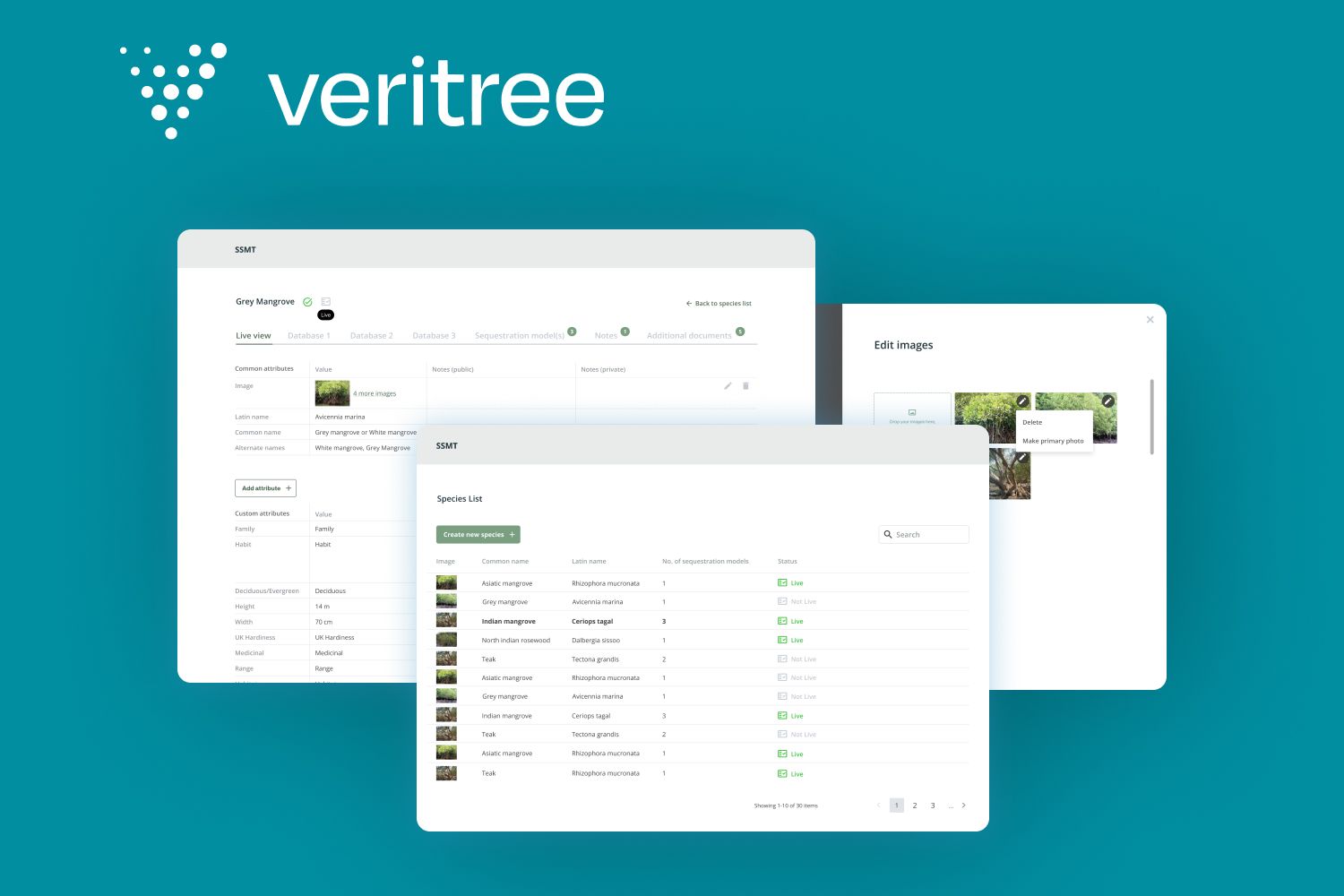
3. Quantum AI
Quantum AI blends quantum computing with machine learning, enabling models to solve problems exponentially faster than classical systems — especially in optimization, cryptography, and complex simulations.
Key Players:
- IBM Qiskit + QML
- Google Quantum AI
- Xanadu (PennyLane)
- Microsoft Azure Quantum
- D-Wave for quantum-hybrid models
Future Impact on AI Stacks:
We’re moving toward hybrid AI stacks, where classical ML handles most workloads but offloads ultra-complex calculations to quantum processors — especially for elite, high-value use cases.
The AI technology stack of the future is more automated, energy-conscious, and computationally powerful than ever before. If you’re building for the next decade, don’t just look at today’s tools—look at the trends that will shape tomorrow’s breakthroughs.

Build the Future with the Right Technology Stack for AI Development
In 2025 and beyond, success in AI won't come from hype — it will come from strategy, structure, and stack. Whether you're building a real-time chatbot, a data-driven recommendation engine, or a domain-specific AI solution, your tech stack will determine how far — and how fast — you can go.
The modern AI technology stack is no longer optional. It’s your foundation for innovation, your launchpad for scale, and your armor for speed, security, and sustainability.
But even the best tools mean nothing without the right hands behind them.
At Fively, we help companies turn bold AI ideas into real-world solutions. From architecture planning and AI infrastructure to building intelligent apps from the ground up — we’ve got the team, the experience, and the passion to bring your vision to life!
Ready to build smarter, faster, and with purpose?
Let Fively help you craft an AI stack that’s built not just for today — but for what’s next!
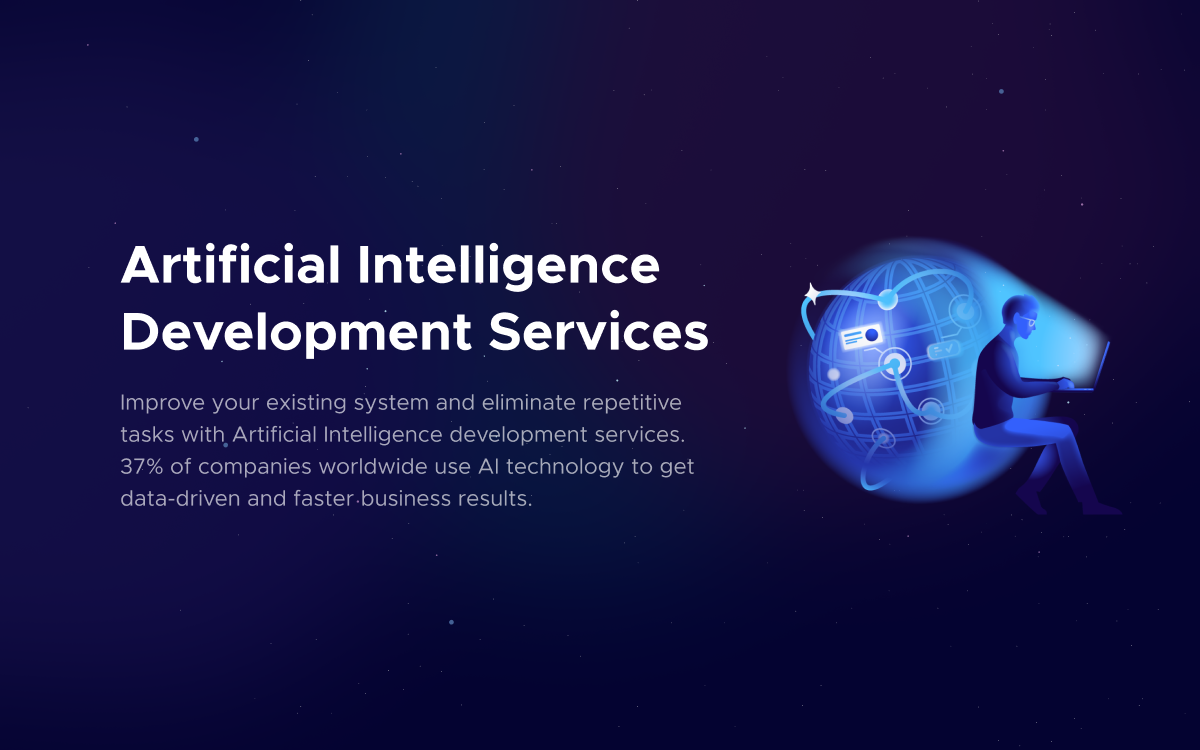
Need Help With A Project?
Drop us a line, let’s arrange a discussion






